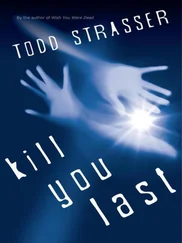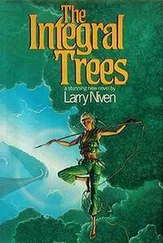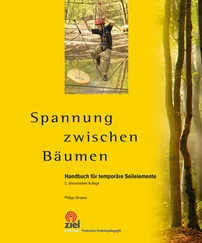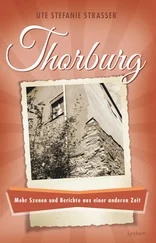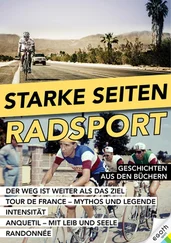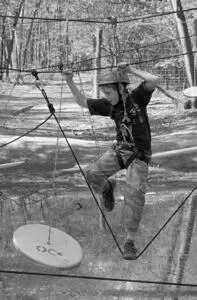
Ropes in Trees
A Guide To Better Temporary Rope Elements
By Philipp Strasser

Publisher’s Note: The publisher has tried to identify all copyright holders of quotations, texts, images, figures and illustrations. Unfortunately, this was not always possible. If we forgot someone, we kindly ask the copyright holders to contact us.
The authors are responsible for the form and contents of this book.
Bibliographical information of the German National Library
The German National Library lists this publication in the German National Bibliography; detailed bibliographical data can be found in the Internet at http://dnb.d-nb.de .
ISBN 978-3-940 562-92-0
| Verlag: |
ZIEL – Center for interdisciplinary experience-based learning GmbH Zeuggasse 7 – 9, 86150 Augsburg, www.ziel-verlag.de |
| Graphic and layout design: |
Stefanie Huber, Petra Hammerschmidt, Vanessa Schnurre Friends Media Group GmbH Zeuggasse 7 – 9, 86150 Augsburg |
| Pictures: |
Philipp Strasser |
| Photos: |
Philipp Strasser, Traude Steurer, Michael Katzler, Petra Schuster |
| Translation: |
KS Übersetzungen, Brunnhofweg 32, CH-3007 Bern |
© All rights reserved. No part of this book must be reproduced (print, photocopy or other techniques) or processed, copied or distributed with electronic systems without written permission of the publisher.
eBook-Herstellung und Auslieferung:
HEROLD Auslieferung Service GmbH
www.herold-va.de
Special thanks are due to Walter Siebert who provided the Standard Operating Procedures for many elements and performed the final check on this book. His indefatigable pursuit of safety and his will to question everything over and over again – combined with the ability to listen to other people’s arguments and experiences and change his opinion if necessary – are very impressive.
Additionally, I would like to thank:
… Petra Schuster, whose presence gave me inspiration and her beautiful Ennstal house was the perfect location to write this book (and who also took the picture of me …)
… Anita Nemeth, Ursula Schürer, Traude Steurer, Veronika Wassertheurer, Andrea Obereigner, Rainer Kudrna, Andrea Pfeiffer, Barbara Tegtbauer, Sandra Wehowar and Thomas Wielander for their support at building numerous prototype elements
… Gert Schweiger, who owns the best forested land for temporary rope elements and made it available to us,
… Barbara Kleemair, Nora Schütz and Sigi van Bosche, Phillip Rehberger (cover photo) climbing models
… Michael Rehm for proofreading, his suggestions, and “a swift kick in the butt” to get this book eventually published
… Bahman Azarm and his team to get this book ready for the English speaking world
… All those who provided feedback to the first edition (in German) of this book and now made this second edition even more comprehensive, informative, and practical
Philipp
Contents
Preface Preface About 20 years ago, I introduced the term “zero accident” for high rope courses. As a mountain guide I found myself increasingly in a bind: my customers had great experiences but I was also confronted with serious accidents year after year. So I was very happy when my friend Bill Daniels introduced me to the “zero accident” concept. I wanted to share my enthusiasm with other colleagues … and met with widespread refusal! So it goes, sometimes, with new ideas! I am very happy to see that, with this book, Philipp Strasser refutes a frequent argument: that it is actually possible to set up numerous elements while applying the Zero Accident concept. One example: He recommends spotting the Mohawk Walk and similar Low Elements with 4 spotters for every participant. It is known that this element is often done without any belay at all. So reading this book, how does a facilitator feel? A logical consequence would be to change the belay concept and from now on work with a team of four spotters. Unfortunately, my observations of some rope course operators in Europe have, all too often, shown that, although there are accidents, there is often little motivation on the part of the operators to correct the situation. “If a child breaks his arm, well, that’s part of the game”. Such accidents do not have to be “a part of the game” anymore. And such attitudes will not be acceptable as ropes courses gain popularity in the United States, where there is less public tolerance when it comes to operator liability. This book will help show how we can keep the participant’s experience exciting and rewarding while simultaneously reducing accidents. In this book Philipp Strasser has only included established elements and processes, to which he has added a new level of safety, while, at the same time, preserving the essence of the participant’s experience. By adopting his ideas, future courses can be built that promise both great experiences, accompanied by reduced risks. Walter Siebert
Introduction
Risks and Hazard Notes
Redundancy, Zero Accident and Other Safety Issues
What Is a Temporary Rope Element or Temporary Rope Course?
Material Stress on Temporary Rope Activities
Participant Safety Near Ground Level
Low V
The Wrapping Knot
The External Multiple Advantage Pulley System
Express Two-To-One Pulley System, Klemheist Knot, Munter Tied Off with Half Hitches, Mercedes Knot
Steel Maillon Rapide Versus Locking Carabiner
Postman’s Walk
Attaching Activity Elements To Tightened Ropes
Low Buckets
Pizzeria, Car Tires, Wobbly Logs
Attaching a High Rope Without Climbing the Tree
Hour Glass and Ship’s Crossing
Attaching a Heavy Duty Round Sling at Height Without Climbing the Tree
Multi-Vine Traverse
Pulley Walk, Deep Buckets
The Mohawk Walk
The Forest Playground
Low Wobbly V
The Alpine Butterfly Knot
Figure Eight Knot Sling Versus Alpine Butterfly Knot
Low Drawbridge
Steps On the Moon
High Temporary Elements
The N Belay
The Belay Triangle
Participants Belaying Participants
The Elevator
Long Way Up
Beko N Belay For Two or More Participants
The Giant Ladder
Lashing
The Vertical Maze
Static Top Rope With a Canopy Above the Element
Climbing The Crates
The Internal Two-To-One Pulley System
The Elevator With Internal Two-To-One Pulley System
The Fire Ladder
Revolving Top Rope For One Participant
Wolf In Sheep’s Clothing
Get Ready For Beaming
Assisted Wobbly Logs
Revolving Top Ropes With Canopies Above the Element For Two Participants
High Drawing Bridge
References
About the Author
Preface
About 20 years ago, I introduced the term “zero accident” for high rope courses. As a mountain guide I found myself increasingly in a bind: my customers had great experiences but I was also confronted with serious accidents year after year. So I was very happy when my friend Bill Daniels introduced me to the “zero accident” concept. I wanted to share my enthusiasm with other colleagues … and met with widespread refusal! So it goes, sometimes, with new ideas!
Читать дальше




